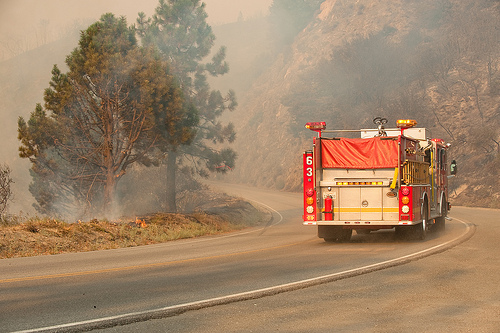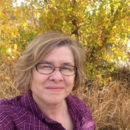We have much more to do and your continued support is needed now more than ever.
The Wests’ New Norm: A Nearly Neverending Wildfire Season

A wildfire driven by drought, wind and record-breaking heat has killed two people, destroyed an estimated 360 homes and blackened at least 15,700 acres in rural subdivisions north of Colorado Springs. If the preliminary numbers hold up, the fire will surpass last summer’s Waldo Canyon fire in Colorado Springs as Colorado’s most destructive in terms of lost homes.
And it’s early in the wildfire season, which grows longer every year in the West. Wildfires erupted even earlier this spring in New Mexico and California. People and wildlife are still dealing with the fallout from last year’s wildfires — property losses, important trout waters choked by ash and erosion flowing down barren mountainsides.
A seemingly never-ending wildfire season has become the new norm in the West. The changing climate has unleashed record-breaking heat and drought in the Rockies. The National Weather Service reported that on June 12, Denver recorded its earliest 100-degree temperature on record. The previous record was June 14, 2006.
Unrelenting drought, heat
The U.S. Drought Monitor shows that much of New Mexico is in extreme to exceptional drought. Colorado ranges from moderate to exceptional, portrayed as dark red blotches on the U.S. map. Climate change is already transforming the landscape, threatening endangered species, stressing fish and other wildlife and affecting hunting and fishing opportunities. Last summer, anglers across Colorado were urged to forgo casting their lines in some spots because of the pressure fish were under due to the extreme heat. The full impact of a wildfire that blasted through northern Colorado’s Poudre Canyon last year is still unclear. State wildlife biologists are monitoring the effects of erosion on the Cache la Poudre River, a favorite trout fishery.
Hunters and anglers, who are on the ground, walking through the backcountry and wading through streams, are making the connections between what they see happening to the landscape and fish and wildlife habitat with our energy choices. Todd Tanner, founder of the sportsmen’s advocacy group Conservation Hawks, calls climate change “the biggest threat we’ve ever faced.”

Smoke from the fires near Colorado Springs, Canon City in central Colorado and in Rocky Mountain National park hangs over the Front Range, obscuring the view of the mountains from Longs Peak in the north to Pikes Peak in the south.
And it’s not even summer yet.
Read more about the threats to wildlife in the report “Wildlife in a Warming World” and learn about ways we can confront the climate crisis.
Take Action
![]() Speak up for wolverines! Tell Congress to pass legislation that will preserve habitat for wolverines and other wildlife>>
Speak up for wolverines! Tell Congress to pass legislation that will preserve habitat for wolverines and other wildlife>>






















